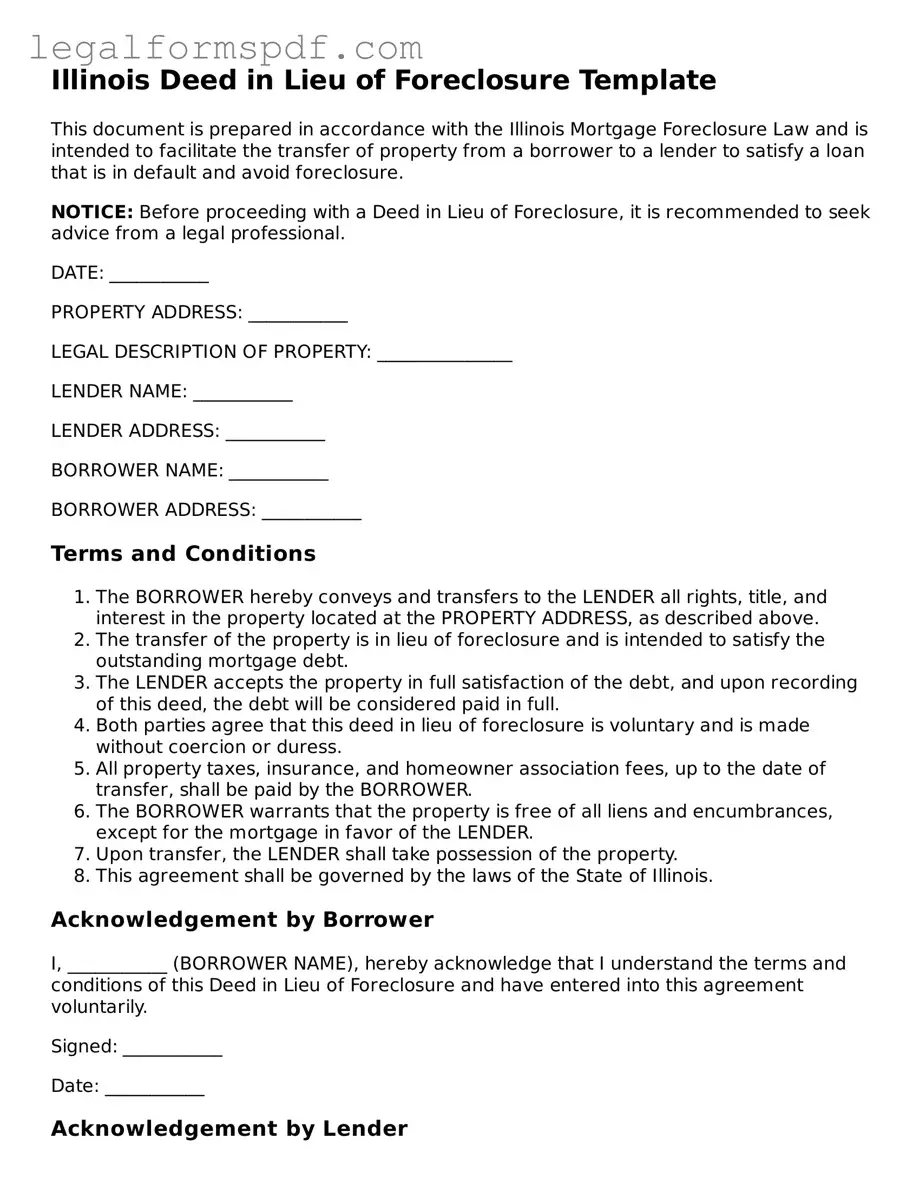What is a Deed in Lieu of Foreclosure in Illinois?
A Deed in Lieu of Foreclosure is a legal document used in Illinois where a homeowner voluntarily transfers the ownership of their property to the lender. This is done to avoid the foreclosure process when the homeowner can no longer make payments on their mortgage. It's an agreement that can provide a more graceful exit for homeowners facing financial difficulties, potentially allowing them to avoid some of the negative impacts a foreclosure could have on their credit history.
How does the Deed in Lieu of Foreclosure process work in Illinois?
In Illinois, the process begins with the homeowner approaching their lender to propose a Deed in Lieu of Foreclosure. If the lender agrees, both parties will then negotiate the terms, which could include forgiving any deficiency between the sale price and the mortgage owed. The homeowner will prepare and sign the deed and other necessary paperwork, transferring the property's title to the lender. Finally, the lender must record the deed with the county recorder's office to complete the transfer.
What are the benefits of choosing a Deed in Lieu of Foreclosure?
Choosing a Deed in Lieu of Foreclosure offers several benefits, including avoiding the public and often lengthy process of foreclosure, potentially less damaging effects on the homeowner's credit score, and the possibility of negotiating terms with the lender, such as debt forgiveness or a different resolution. It can also provide a sense of relief and closure for homeowners, allowing them to move forward more quickly.
Are there any drawbacks to a Deed in Lieu of Foreclosure?
Yes, there can be drawbacks. A Deed in Lieu of Foreclosure may still negatively impact a homeowner's credit score, though typically less than a foreclosure. There might also be tax implications, as forgiven debt can be considered taxable income. Additionally, not all lenders will agree to a Deed in Lieu of Foreclosure, especially if there are second mortgages or other liens on the property, as these can complicate the process.
Can any homeowner in Illinois choose a Deed in Lieu of Foreclosure?
Not all homeowners may qualify for a Deed in Lieu of Foreclosure. Lenders typically require that the homeowner has explored all other options, such as loan modifications or refinancing. The property must also usually be on the market for a certain period without selling. Furthermore, the lender must agree that accepting the deed is in their best interest, often requiring that there be no other liens on the property as these can complicate the process.
How does a Deed in Lieu of Foreclosure affect a homeowner's taxes?
The impact of a Deed in Lieu of Foreclosure on a homeowner's taxes can vary. If the lender forgives any part of the mortgage debt, the forgiven amount might be considered as income for tax purposes. However, the Mortgage Forgiveness Debt Relief Act could allow some homeowners to exclude this forgiven debt from their income, under certain conditions. It's advisable for homeowners to consult with a tax professional to understand the specific tax implications related to their situation.
